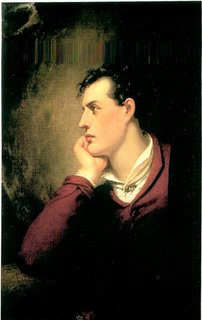I had to have some minor surgery last week, which has it’s low points, but also has the plus-side that people in my family feel sorry for me and thus buy me books. I’ve been on a non-fiction binge lately, and just finished Mad Mary Lamb: Lunacy and Murder in Literary London by Susan Tyler Hitchcock. (Mary Lamb was the sister of poet Charles Lamb, who eventually went on to do some writing, mostly tales from Shakespeare for children, of her own. Her other claim to fame was she murdered her mother in a psychotic fit, and was in and out of hospitals for the rest of her life). This was a very interesting book, encompassing many aspects of Regency life, including the habits of the non-Ton classes, poetry and literary sorts (the Lambs were friends with Wordsworth and Coleridge), and medical care for the mentally ill.
There were two large mental hospitals in London at this time, at least sixteen private madhouses (where the wealthy could be discreetly stashed away), and numerous smaller, unlicensed places. One of the large hospitals was the famous Bethlehem (Bedlam). A family member could put forth a petition to the governor of the hospital certifying that the candidate was indeed a lunatic. Other info required was the age of the patient, how long their senses had been “disordered”, the first instance of such disorder, whether or not “mischief” had been attempted, and the general state of their physical health. The subcomittee met every Saturday at eleven to consider that week’s petitioners.
The building itself was built in 1676, designed by Robert Hooke (who sometimes worked with Wren) on a grand scale. It was 550 feet end to end, located just outside London’s city wall, facing Moorfields (a public green). The entry was flanked by massive statues of Melancholy and Mania. Wings were added in the 1730s for male and female quarters. By 1796, though, it was falling into disrepair, with its foundations sinking.
Another hospital was St. Luke’s, founded in 1751 on the north edge of Moorfields, facing Bethlehem. Its founding physician was William Battie, who believed the treatment of the insane should be guided by knowledge and study (not just tying them up and leaving them to their own devices). He wrote “Treatise on Madness” in 1758, defining madness as “the too lively or too languid perception of things” (I suffer from the second, I think). Battie said that treatment should begin with “the patient’s being removed from all objects that act forcibly upon the nerves.” He was against bleeding, blistering, purges, vomiting, and opium.
James Munro was the Bedlam physician from 1728-52 (and was then succeeded by his son and grandson). In his “Remarks on Dr. Battie’s Treatise” he argued FOR evacuation, vomiting, bleeding, blistering–“why should we endeavor to give the world a shocking opinion of a remedy, that is not only safe but greatly useful?”
Some private hospitals included Whitmore House, “the madhouse for aristocrats,” which cost 1500 pounds a year. Hoxton House, which was one of the largest (486 patients in 1815), and seemed to be a sort of dumping ground for the Admiralty to send their officers and sailors who were “mad.” There was Fisher House in Islington (where Mary Lamb was first sent). It was quiet, in country surroundings, run by a mother and daughter who were more housekeepers than nurses. (Government licensing only required an annual visit by the attending physician, so staff only had to watch over the residentsand rein in their behavior. If the patient needed a doctor or apothecary, the family arranged for it).
This is just a small taste of the information in this book, which I recommend for a different slant on the Regency period (and a does of gratitude for not being in a Regency madhouse!!!).
p.s. Blogger won’t let me post pics today, so just enjoy the wealth of images Cara gave us yesterday. 🙂

